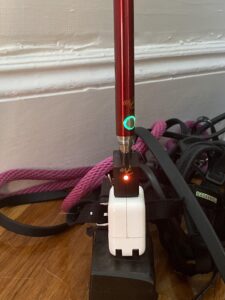When do Dodge Chargers start having problems? Well, every car owner knows that at some point, their beloved vehicle will encounter some issues. While Dodge Chargers are renowned for their power and performance, they are not immune to the occasional hiccup. But don’t worry, understanding when these problems might arise can help you be prepared and take timely action. So, let’s dive into the world of Dodge Chargers and explore when these mighty machines might start experiencing some troubles.
When Do Dodge Chargers Start Having Problems?
The Dodge Charger is a popular and iconic American muscle car known for its power, performance, and sleek design. However, like any vehicle, it is not immune to issues or problems. Understanding when these problems may arise can help Charger owners take proactive steps to maintain and prolong the life of their vehicle. In this article, we will explore the common problems that Dodge Chargers may experience, when these issues typically occur, and how to address them effectively.
1. Early Model Years: 2006-2010
The first generation of the modern Dodge Charger was produced from 2006 to 2010. During this time, some owners reported various mechanical and electrical issues. Here are some common problems associated with early model years:
1.1. Transmission Issues
One of the most prevalent concerns mentioned by owners of early model years is transmission problems. Some reported transmission failures, including slipping, jerking, or even complete transmission failure. This issue often manifested within the first few years of ownership.
1.2. Electrical Gremlins
Another problem that plagued early Dodge Chargers was electrical issues. Owners complained about faulty wiring, malfunctioning power windows, and sporadic instrument panel behavior. These electrical gremlins could be frustrating and, in some cases, challenging to diagnose and fix.
1.3. Suspension Components
Several Charger owners also experienced suspension problems, particularly with the control arms and ball joints. Premature wear and tear on these components led to clunking noises, uneven tire wear, and compromised handling.
2. Mid-Generation: 2011-2014
The second generation of the Dodge Charger spanned from 2011 to 2014. During this period, Dodge addressed many of the issues reported in the earlier models. However, certain problems were still observed:
2.1. Uconnect System
While the Uconnect infotainment system was a highly sought-after feature in the mid-generation Chargers, some owners reported glitches and freezing issues. Software updates were released to address these problems, but occasional malfunctions were still reported.
2.2. Hemi Engine Misfire
Chargers equipped with the 5.7L Hemi V8 engine occasionally experienced misfires. These misfires could lead to rough idling, reduced performance, and even engine damage if left unaddressed. Regular maintenance and monitoring of the ignition system can help prevent such issues.
2.3. Front Suspension Bushings
Some Charger owners noticed premature wear and failure of the front suspension bushings. This could result in a noisy ride, poor handling, and increased tire wear. Regular inspections and replacement of worn bushings can help maintain optimal suspension performance.
3. Recent Years: 2015-Present
Dodge has made significant improvements in the quality and reliability of the Charger in recent years. However, a few issues have still been reported:
3.1. Paint Issues
Some Charger owners have reported paint problems, including peeling and chipping. While not a widespread issue, it can be frustrating for owners who take pride in the appearance of their vehicle.
3.2. Cooling System
A small number of Chargers have experienced cooling system issues, such as radiator leaks or faulty water pumps. Regular maintenance, including coolant flushes and inspections, can help identify and address potential cooling system problems.
3.3. Brake System
Some Charger owners have reported premature wear of brake components, such as rotors and pads. Aggressive driving habits or inadequate maintenance can contribute to accelerated brake wear. Regular inspections and timely replacement of worn components can ensure optimal brake performance.
4. Maintenance and Care to Prevent Problems
While Dodge Chargers may have their share of problems, proper maintenance and care can go a long way in preventing or minimizing these issues. Here are some essential steps Charger owners can take:
4.1. Follow the Manufacturer’s Maintenance Schedule
Adhering to the recommended maintenance schedule outlined in the owner’s manual is crucial. Regular oil changes, fluid flushes, filter replacements, and inspections can help identify and address potential issues before they escalate.
4.2. Address Warning Signs Promptly
If you notice any warning signs, such as unusual noises, dashboard warning lights, or performance issues, it’s important to have them checked by a qualified mechanic as soon as possible. Ignoring these signs can lead to more significant problems and higher repair costs.
4.3. Use Genuine Parts and Qualified Technicians
When it comes to repairs and replacements, it’s advisable to use genuine Dodge parts and seek the expertise of certified technicians. While aftermarket parts may be more affordable, they may not offer the same quality and longevity as genuine OEM parts.
4.4. Practice Safe and Responsible Driving
Aggressive driving habits, such as hard acceleration and sudden braking, can put unnecessary stress on your Charger’s components and increase the likelihood of problems. By practicing safe and responsible driving, you can extend the lifespan of your vehicle.
While Dodge Chargers are generally reliable vehicles, they may experience certain problems at different stages of their lifespan. Being aware of these potential issues and taking proactive steps to address and prevent them can help Charger owners enjoy their vehicles for years to come. Regular maintenance, prompt repairs, and responsible driving are key to ensuring a trouble-free experience with your Dodge Charger.
Dodge challenger won’t start? Quick and easy fix!!
Frequently Asked Questions
When do Dodge Chargers start experiencing problems?
Dodge Chargers, like any other vehicle, may start experiencing problems as they age and accumulate mileage. While the specific time frame varies depending on various factors, here are some frequently encountered problems that Dodge Chargers may face over time.
What are common issues to look out for in older Dodge Chargers?
Some common problems that can be observed in older Dodge Chargers include transmission issues, electrical problems, suspension and steering component wear, and engine performance problems. It’s important to stay vigilant and address these issues promptly to ensure the longevity of your Dodge Charger.
At what mileage do Dodge Chargers typically start encountering problems?
The mileage at which Dodge Chargers start experiencing problems can vary. It is generally recommended to closely monitor your vehicle’s performance and maintenance needs starting around the 75,000 to 100,000-mile mark. Regular inspections and maintenance can help detect and prevent potential problems.
What are some signs that my Dodge Charger may be experiencing issues?
There are several signs that may indicate your Dodge Charger is experiencing problems. These signs include unusual engine noises, difficulty shifting gears, warning lights on the dashboard, vibrations or shaking while driving, and a noticeable decrease in performance or fuel efficiency. If you notice any of these signs, it is advisable to have your vehicle checked by a qualified mechanic.
How can I prevent or minimize issues with my Dodge Charger?
To prevent or minimize issues with your Dodge Charger, it is important to follow the manufacturer’s recommended maintenance schedule, which includes regular oil changes, fluid checks, and filter replacements. Additionally, addressing any minor issues promptly can prevent them from escalating into more significant problems.
Are Dodge Chargers reliable vehicles in general?
Dodge Chargers have a reputation for being reliable vehicles when properly maintained. Regular maintenance, timely repairs, and responsible driving habits can contribute to the overall reliability and longevity of your Dodge Charger.
Final Thoughts
Dodge Chargers, like any other vehicle, can start experiencing problems at different stages of their life. However, it is commonly reported that the majority of issues tend to arise after the 5 to 7-year mark. This is when various components and systems may start to show signs of wear and tear, including the engine, transmission, suspension, and electrical systems. Regular maintenance and proactive care can help mitigate these problems, but it’s crucial to stay vigilant as your Dodge Charger ages. Being aware of potential issues and addressing them promptly can ensure a smoother driving experience and potentially save you from costly repairs down the road.



